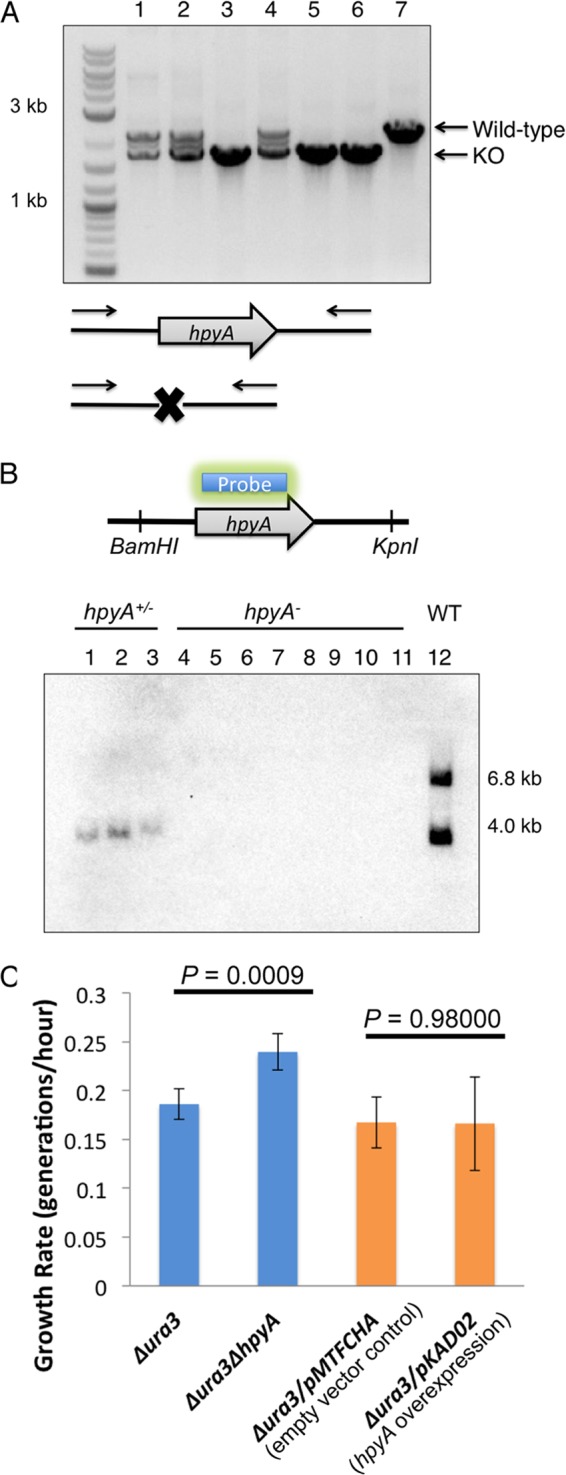FIG 2 .

Histone knockout mutants are readily generated and viable. (A) PCR validation of transformants: lanes 1, 2, and 4 are heterozygous at the hpyA locus; lanes 3, 5, and 6 are deletion mutants; and lane 7 corresponds to the Δura3 parent strain. Wild-type amplicon, 2.1 kb; knockout (KO), 1.7 kb. (B) Southern blotting of restriction enzyme-digested genomic DNA using a probe internal to the hpyA ORF confirms that knockouts are homozygous. Lanes 1, 2, and 3 correspond to the heterozygous mutants; lanes 4 to 9 are biological replicates used in this study; lanes 10 and 11 are independently isolated histone deletion mutant clones; and lane 12 is a partial digest control of Δura3 parent strain genomic DNA. Primer sequences for both screens are listed in Table S5 in the supplemental material. WT, wild type. (C) The Δura3 ΔhpyA histone deletion strain grows significantly faster than the parent Δura3 strain (blue bars), while the Δura3/pKAD02 hpyA overexpression strain is indistinguishable from the Δura3/pMTFCHA empty vector control (orange bars). Error bars represent standard deviations from the means for three biological replicate cultures, each with three technical replicates.
